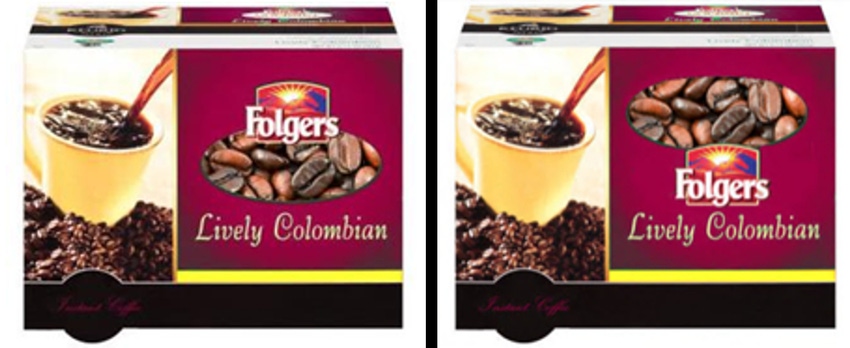How logo location on packaging influences customer perception
October 12, 2015

Aparna Sundar
If you want your product to be noticed, pay particular attention to the placement of your company’s logo on your product packaging. While it may seem counter-intuitive to highlight the company rather than the product itself—particularly with new or limited-edition products—research shows that logo placement leads to brand recognition in the mind of the consumer and top placement evokes positive feelings of brand superiority.
One of a company’s primary expenses is in developing a logo for itself that establishes brand identity and reinforces customer perception of the brand. Logo design is more fine art than traditional graphic design and designers and brand managers must work closely together to create the right brand representation. The logo is often the consumer’s first point of contact for a brand and as such, it is crucial that product and company logos evoke the right image for the brand as well as illicit positive feelings and reactions in consumers. Much time, money and energy goes into the process of developing an ideal logo. Ensuring that it is placed properly on packaging to maximize brand attention is one of the most important marketing decisions brand managers can make.
To ensure that a logo provokes the desired feelings in consumers, company branding managers must consider each part of the logo’s composition including typeface, logo design, color, shape and placement. While some design thinking rules for logo creation exist, market trends and personal preference make selecting successful logo components difficult and time-consuming. However, logo placement is a proven method to maximize positive consumer perception of a brand.
Companies can influence brand perception and reinforce favorable impressions of a powerful brand by ensuring that logos appear at or near the top of product packaging. Research conducted by some researchers demonstrates a strong correlation between location and the perception of power.
Further there exists a link between logo placement on packaging and how it can affect the consumer perception of dominant versus non-dominant brands in the marketplace. Consumers prefer powerful brands (that is, expensive or exclusive brands), when the logo appears high on the packaging and they prefer less powerful brands (for instance, store or budget brands), more when the logo is featured low on the packaging. Consumers are conditioned to instinctively understand the difference between powerful and less powerful brands and their brand recognition behavior suggests that they choose products whose logo placement reinforces the consumer’s perception of that brand.
For instance, in a supermarket, a powerful brand such as Kellogg’s or Coca-Cola puts their logo at the top of the packaging, thus reinforcing the consumer’s perception of the brand’s power and status. When consumers see these products, they make the connection between the powerful brand and the logo placement and that connection reinforces their perception of the brand’s power. Simply put, that is where consumers expect to see the logos for powerful brands; at the top.
In contrast, if a consumer is searching for a less-powerful brand—a store brand or discount brand, for instance—there is less likelihood that the consumer will expect the company’s logo to appear at the top of the packaging.
Supermarkets and other mass retailers are aware of this fact and the power of logo placement and they strategically organize stores and store shelves so that the most powerful brands appear at eye level for most consumers. These brands also tend to be more expensive and therefore, making them easier for consumers to discover—particularly with highly-placed logos—drives up revenue for both the store and the brand, thereby further reinforcing the perception of brand power.
Because the concepts of up versus down and high versus low are inherently familiar to consumers with the near constant reinforcing of the conceptual link between power and height, consumers are then able to make value judgments about a brand’s power through simple recognition of logo packaging placement. Designers and brand managers must consider these correlations when designing brand logos.
The psychology of design behind a logo, packaging and advertising is a complex system involving many separate but complimentary components. Packaging designers must consider not only the logo placement but also the overall harmony of the packaging itself. Reinforcing brand power and superiority with a highly placed logo would not be as effective if the resulting packaging appeared awkward and clumsy.
Consumers can also respond to disharmony in packaging, which can have the opposite of the desired effect.
While much is understood about the power of logo placement on packaging, there is a need for more research on the effects of logo shape, color, size, and more on symbolic communication with the consumer. As mentioned, a logo is often the consumer’s first experience with a particular brand and, with purchasing decisions being made in a matter of seconds, an immediate connection with the consumer is crucial to brand success.
In Malcolm Gladwell’s bestselling book “Blink: The Power of Thinking Without Thinking,” the author explores the power the external market information—that is logos, advertising campaigns, packaging and placement—has on a consumer’s internal purchasing decisions. Further research into this area of consumer behavior and marketing will only serve to better educate brand managers and company product developers about the influence of their branding and logo decisions.
While the correlation between powerful and non-powerful brands and high or low logo placement has been explored, there is room for exploration into the psychology and subliminal communication between brands and consumers. However, for packaging designers and brand managers, choosing the correct logo placement to reinforce your brand’s image in the mind of the consumer is a relatively simple and low-cost way to emphasize brand power and create a value proposition for your customer.
By positioning your logo where the consumer expects to find it on your packaging, you are reinforcing the value of your brand and driving sales for your company.

Aparna Sundar, Ph.D. is an assistant professor of marketing at the Lundquist College of Business at the University of Oregon. This article is based on a research article that appeared in the September 2014 issue of the Journal of Marketing.
You May Also Like


